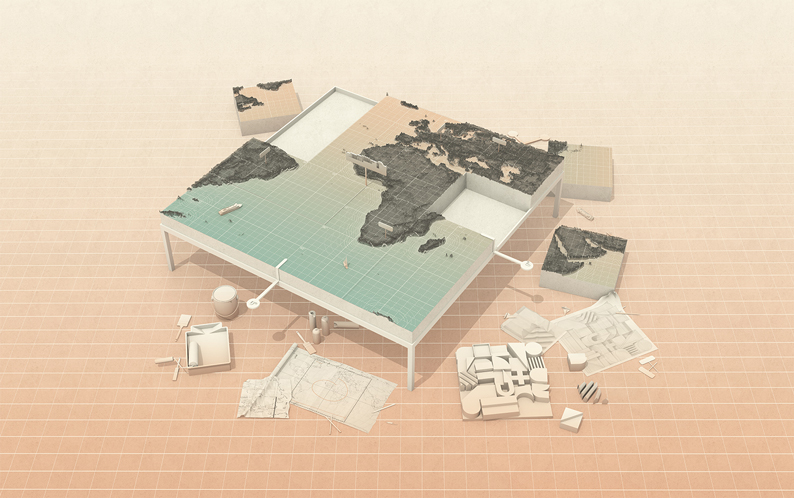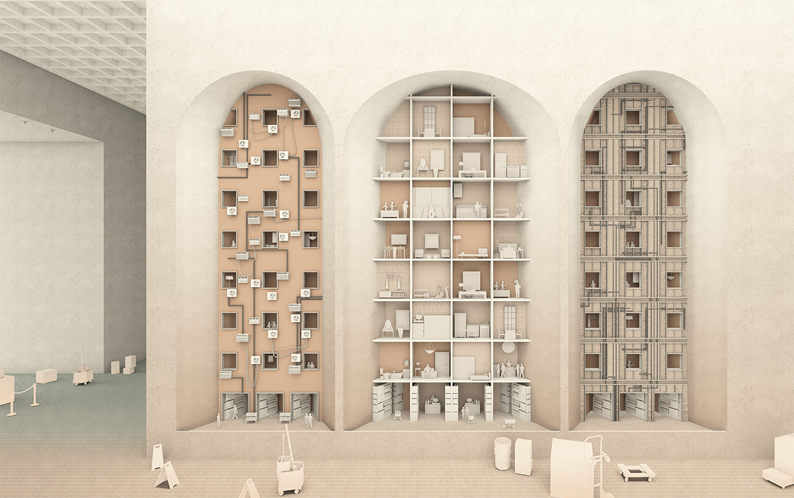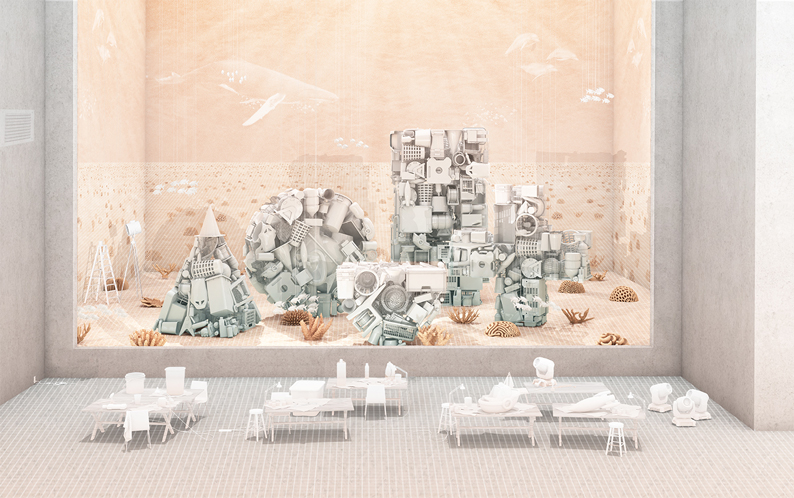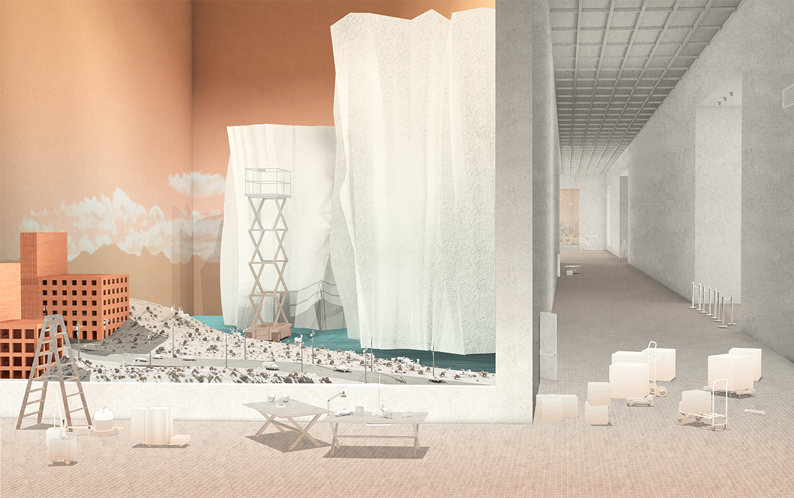
Middle Earth: Dioramas for the planet
Neyran Turan
Middle of the Earth: Dioramas for the Planet is a geo-architectural fiction, which positions climate change as a cultural and political idea that requires a renewed architectural imagination. The project imagines a natural history museum, which contains large scale dioramas that each displays a specific problem brought by climate change taking place at the “middle of […]
Middle of the Earth: Dioramas for the Planet is a geo-architectural fiction, which positions climate change as a cultural and political idea that requires a renewed architectural imagination.
The project imagines a natural history museum, which contains large scale dioramas that each displays a specific problem brought by climate change taking place at the “middle of the earth,” i.e., around the equator, the earth’s zero-degree latitude: the melting of the icebergs, deforestation in Brazil and Indonesia, plastic waste in the Pacific Ocean, sand mining in Singapore, and the e-waste dump sites in Ghana.
Rather than limiting the role of climate change for design to a problem to solve, the project speculates on architecture as a measure against which the world might be read.

Entrance hall. The relief map table showing the actual location of the museum, situated at the coordinates 00N 00E, the exact location on Earth where the equator crosses the prime meridian near the Gulf of Guinea, Africa.

Triptych of air Conditioning. Diorama depicting the extravagant use of air-conditioning around the zero-degree latitude.

Plastic Pacific Hall. Diorama portraying the plastic trash in the Pacific Ocean.

Room of Icebergs. Diorama portraying the melting of the icebergs and their drift to the coastal regions within the earth’s zero-degree latitude.